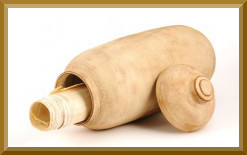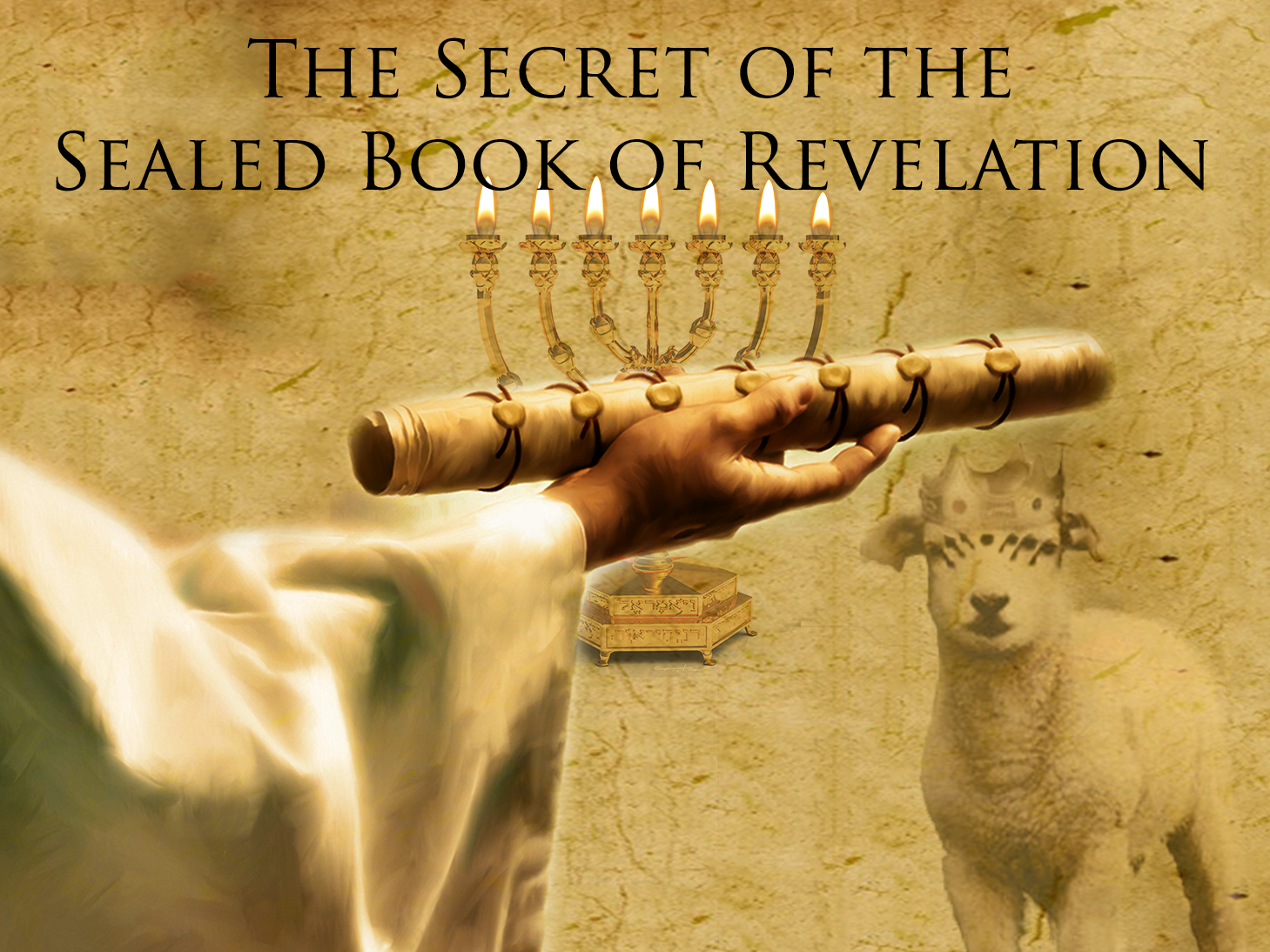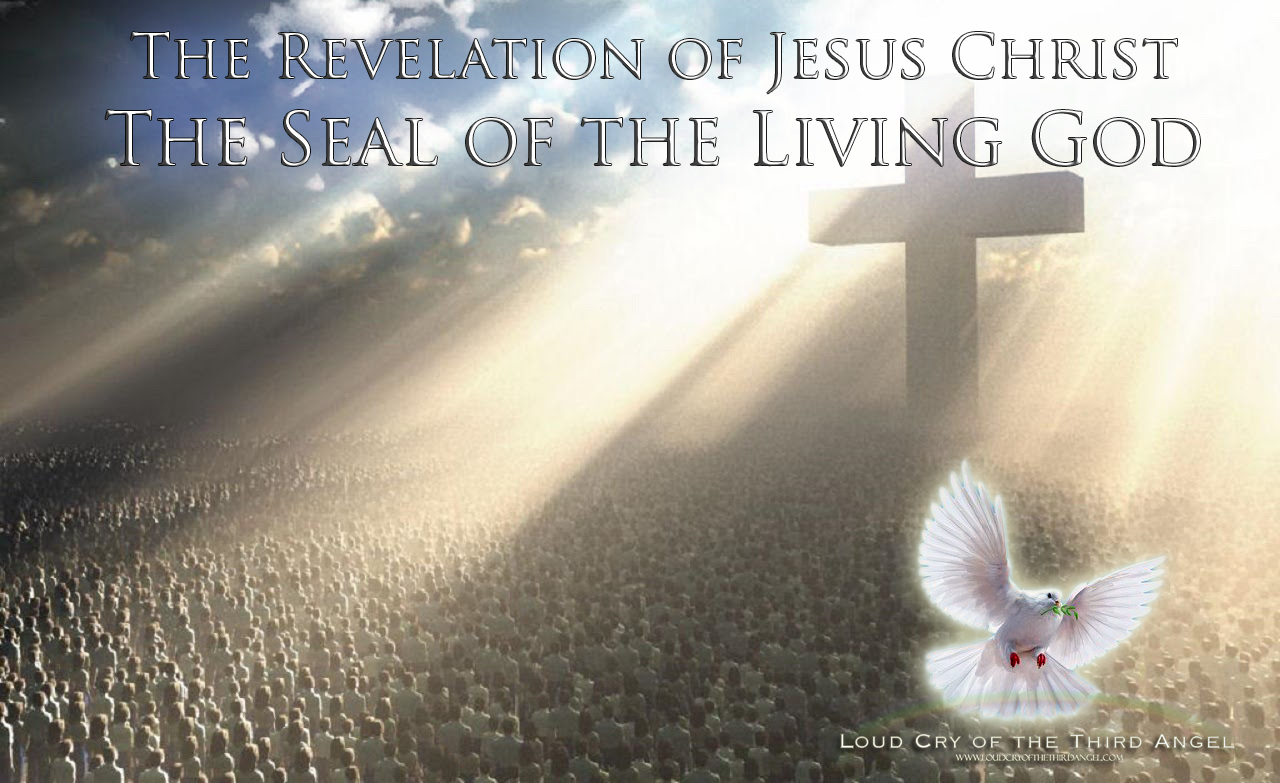In the book of Revelation, there is displayed a throne room scene. Upon the throne is seated the Father, to whom seraphim and cherubim bow themselves, crying “Holy, holy, holy, Lord God Almighty, which was, and is, and is to come.” (Rev. 4:8) Yet it was the following scene that needs special consideration. “And I saw in the right hand of him that sat on the throne a scroll written within and on the backside, sealed with seven seals. And I saw a strong angel proclaiming with a loud voice, “Who is worthy to open the book, and to loose the seals thereof?”” (Rev. 5:1-2)
 It is evident that this seven-sealed scroll was not to be merely opened by anyone. He must be found “worthy”, or an alternate translation would be “deserving as ones due reward”. What was the seven-sealed scroll, what deemed the soul worthy of opening it, and what were the implications of the scroll once all of its seals were loosed?
It is evident that this seven-sealed scroll was not to be merely opened by anyone. He must be found “worthy”, or an alternate translation would be “deserving as ones due reward”. What was the seven-sealed scroll, what deemed the soul worthy of opening it, and what were the implications of the scroll once all of its seals were loosed?
“And no man in heaven, nor in earth, neither under the earth, was able to open the book, neither to look thereon. And I wept much, because no man was found worthy to open and to read the book, neither to look thereon.” (v. 3-4) The kind of crying here displayed by John was a deep and loud wailing of an intensive nature. John both knew what the scroll was and understood the implications of it not being loosed, having found none worthy of opening its seven seals. Though it was only given to the one worthy to open and reveal the details of it’s contents, such scrolls were common in both the culture of the Israelite people and the Romans.
THE SCROLL IN ISRAELITE AND ROMAN CULTURE
 First, in Roman culture, when a testament of a citizen in Rome was to be made, it was done in a manner as to prevent forgery of the will of the deceased. It was to go through a legal sealing process, where witnesses were to be present. It was only in this way that the possessions, from houses and lands to riches and honor, could be verifiably given into the hands of another man. Historian Henry James Summer Maine, in his 1861 book “Ancient Law” wrote the following regarding the will and inheritance in Roman law:
First, in Roman culture, when a testament of a citizen in Rome was to be made, it was done in a manner as to prevent forgery of the will of the deceased. It was to go through a legal sealing process, where witnesses were to be present. It was only in this way that the possessions, from houses and lands to riches and honor, could be verifiably given into the hands of another man. Historian Henry James Summer Maine, in his 1861 book “Ancient Law” wrote the following regarding the will and inheritance in Roman law:
“…the Testament…was invalid unless sealed by seven witnesses. Like the Mancipatory Will, it passed the Inheritance and not merely a Bonorum Possessio**.” (Henry Maine, Ancient Law: Its Connection with the Early History of Society, 2012) **Bonorum Possessio is Roman Law which declares that the right of possession of the property of a deceased person specifically, and the effective right as successor/heir.
If the testament was not sealed by seven witnesses according to Roman law, the testament was legally made void. If seven witnesses could not testify to the will of the deceased, the will would be considered invalid. Roman Law university professors, Bruce W. Frier and Thomas McGinn, affirmed this in their “Casebook on Roman Family Law”. On page 345 of their casebook, we read: “…eventually the praetor was prepared to grant bonorum possessio in accordance with the terms of the will (se- cundum tabulas) to the heir named in the will, provided it had the seals of seven witnesses.” (B. Frier, T. McGinn, A Casebook on Roman Family Law, p. 345, 2004)
“And for this cause he is the mediator of the new testament, that by means of death, for the redemption of the transgressions that were under the first testament, they which are called might receive the promise of eternal inheritance. For where a testament is, there must also of necessity be the death of the testator. For a testament is of force after men are dead: otherwise it is of no strength at all while the testator liveth.” (Hebrews 9:15-17)
In the testament, the death of the one who gave the testament is necessary to receive the promise of inheritance. Likewise, it was necessary that Christ should die, and to rise as a new man, that He might receive the inheritance that is promised to the firstborn sons in Israel. He is “the beginning, the firstborn from the dead; that in all things he might have the preeminence.” The right of the firstborn was to receive the father’s estate, a “double portion of all that he hath” (Deut. 21:17).
Yet to this will required seven witnesses according to Roman law. If the witnesses were not present, the will was considered ineffective, the the property was to be distributed according to the legal guidelines set forth by the Empire.
THE LAW OF THE KINSMEN REDEEMER
Similarly to the Roman law regarding the testament was the law of the kinsmen redeemer. This law held several distinct purposes. The first was to revive the name of the dead upon the land of their inheritance to “raise up the name of his brother in Israel”.
“If brethren dwell together, and one of them die, and have no child, the wife of the dead shall not marry without unto a stranger: her husband’s brother shall go in unto her, and take her to him to wife, and perform the duty of an husband’s brother unto her. And it shall be, that the firstborn which she beareth shall succeed in the name of his brother which is dead, that his name be not put out of Israel.” (Deuteronomy 25:5-6)
The second was when the heir of the land had fallen into poverty, and had sold himself into the hand of the foreigners, “Either his uncle, or his uncle’s son, may redeem him, or any that is nigh of kin unto him of his family may redeem him; or if he be able, he may redeem himself.” (Leviticus 25:49) Moreover, if the heir of the land had fallen into poverty, he could sell off his birthright. Yet if he did this, his brother was able to redeem it for him. “If thy brother be waxen poor, and hath sold away some of his possession, and if any of his kin come to redeem it, then shall he redeem that which his brother sold.” (Leviticus 25:25)
One prophetic example of this was when Jerusalem was laid desolate for seventy years. In the eighteenth year of the desolation, the cousin of Jeremiah, Hanameel, came to Jeremiah as to his legal next-of-kin, to buy his land for himself, that in the days after the captivity, there would be a promise of a sure return to the land. To receive the title deed to the land, to become the legal heir of the land, Jeremiah must purchase the land in the sight of witnesses, and circumscribe the evidence with the seals of the witnesses. This was the custom of land purchases among the Hebrews and other nations.
 “Behold, Hanameel the son of Shallum thine uncle shall come unto thee, saying, Buy thee my field that is in Anathoth: for the right of redemption is thine to buy it. So Hanameel mine uncle’s son came to me in the court of the prison according to the word of the LORD, and said unto me, Buy my field, I pray thee, that is in Anathoth, which is in the country of Benjamin: for the right of inheritance is thine, and the redemption is thine; buy it for thyself. Then I knew that this was the word of the LORD. And I bought the field of Hanameel my uncle’s son, that was in Anathoth, and weighed him the money, even seventeen shekels of silver. And I subscribed the evidence, and sealed it, and took witnesses, and weighed him the money in the balances. So I took the evidence of the purchase, both that which was sealed according to the law and custom, and that which was open: And I gave the evidence of the purchase unto Baruch the son of Neriah, the son of Maaseiah, in the sight of Hanameel mine uncle’s son, and in the presence of the witnesses that subscribed the book of the purchase…Thus saith the LORD of hosts, the God of Israel; Take these evidences, this evidence of the purchase, both which is sealed, and this evidence which is open; and put them in an earthen vessel, that they may continue many days. For thus saith the LORD of hosts, the God of Israel; Houses and fields and vineyards shall be possessed again in this land.” (Jeremiah 32:7-15)
“Behold, Hanameel the son of Shallum thine uncle shall come unto thee, saying, Buy thee my field that is in Anathoth: for the right of redemption is thine to buy it. So Hanameel mine uncle’s son came to me in the court of the prison according to the word of the LORD, and said unto me, Buy my field, I pray thee, that is in Anathoth, which is in the country of Benjamin: for the right of inheritance is thine, and the redemption is thine; buy it for thyself. Then I knew that this was the word of the LORD. And I bought the field of Hanameel my uncle’s son, that was in Anathoth, and weighed him the money, even seventeen shekels of silver. And I subscribed the evidence, and sealed it, and took witnesses, and weighed him the money in the balances. So I took the evidence of the purchase, both that which was sealed according to the law and custom, and that which was open: And I gave the evidence of the purchase unto Baruch the son of Neriah, the son of Maaseiah, in the sight of Hanameel mine uncle’s son, and in the presence of the witnesses that subscribed the book of the purchase…Thus saith the LORD of hosts, the God of Israel; Take these evidences, this evidence of the purchase, both which is sealed, and this evidence which is open; and put them in an earthen vessel, that they may continue many days. For thus saith the LORD of hosts, the God of Israel; Houses and fields and vineyards shall be possessed again in this land.” (Jeremiah 32:7-15)
“Men shall buy fields for money, and subscribe evidences, and seal them, and take witnesses in the land of Benjamin, and in the places about Jerusalem, and in the cities of Judah, and in the cities of the mountains, and in the cities of the valley, and in the cities of the south: for I will cause their captivity to return, saith the LORD.” (Jer. 32:44)
Jeremiah redeemed the land, that it might be possessed again after the fall of Babylon and her king. Thus, there was a sealed title deed, which had been sealed by the testimony of witnesses. The seals in this case were the proof of credible witnesses. The need of witnesses were as proof of the purchase of any land, whether in Israle or not. This was the custom even in the days of Abraham. When Sarah died, and Abraham sought for a plot of land wherein to bury her, he went to Ephron the Hittite to purchase a field from him. To validate the purchase, that there would be no treacherous dealings, but to povide things honest in the sight of all men, the children of Heth were taken as witnesses (See Genesis 23).
Witnesses were also required for every transaction among kinsmen redeemers, whether for land or for raising up the name of the dead upon his inheritance. “Then said Boaz, What day thou buyest the field of the hand of Naomi, thou must buy it also of Ruth the Moabitess, the wife of the dead, to raise up the name of the dead upon his inheritance. And the kinsman said, I cannot redeem it for myself, lest I mar mine own inheritance: redeem thou my right to thyself; for I cannot redeem it…Therefore the kinsman said unto Boaz, Buy it for thee. So he drew off his shoe. And Boaz said unto the elders, and unto all the people, Ye are witnesses this day, that I have bought all that was Elimelech’s, and all that was Chilion’s and Mahlon’s, of the hand of Naomi.” (Ruth 4:8-9)
Therefore, what was the scroll that John saw? John saw the land inheritance, the title deed of the land which was sold by Adam through sin. To find none worthy was to mean that none should receive the inheritance; none should be a redeemer of the earth; and therefore, none should raise up the name of the dead, the name of Adam. It is understandable that John should wail with an agonizing cry.
“And one of the elders saith unto me, Weep not: behold, the Lion of the tribe of Juda, the Root of David, hath prevailed to open the book, and to loose the seven seals thereof. And I beheld, and, lo, in the midst of the throne and of the four beasts, and in the midst of the elders, stood a Lamb as it had been slain, having seven horns and seven eyes, which are the seven Spirits of God sent forth into all the earth.” (Revelation 5:5-6)
That Christ is called the Lion of the tribe of Judah is a reference to the blessing of the kingly sceptre, and the right to the throne of David. That He is seen as a lamb as it had been slain testifies to the redemption price to raise up the name of Adam, and pay the price of the earth.
“Forasmuch as ye know that ye were not redeemed with corruptible things, as silver and gold, from your vain conversation received by tradition from your fathers; But with the precious blood of Christ, as of a lamb without blemish and without spot:” (1 Peter 1:18-19)
“And he went and took the scroll from the right hand of him who was seated on the throne. And when he had taken the scroll, the four living creatures and the twenty-four elders fell down before the Lamb…And they sang a new song, saying, “Worthy are you to take the scroll and to open its seals, for you were slain, and by your blood you ransomed [redeemed] people for God from every tribe and language and people and nation, and you have made them a kingdom and priests to our God, and they shall reign on the earth.” (Revelation 5:7-10)
When the Lamb that was slain took the scroll, it is then that the elders fall to the ground, pronouncing why the Lamb is worthy to open the scroll, “for you were slain, and by your blood you redeemed people for God…and they shall reign on the earth.” Therefore the twenty-four elders are perfectly aware, with John, of what the opening of the scroll means. It is an inheritance and a title deed to the earth, and when it’s seven seals are loosed, the earth shall officially be returned into the hands of Christ, who has raised up the name of Adam upon it. The elders sing the song of the kinsman Redeemer; that Christ, the nearest of kin to Adam, purchased his race back from slavery, being made the nearest capable male blood relative able to pay the wages of sin. That Christ has raised up the name of the dead, and has purchased the land with His own blood. Thus, Christ has completed the price of the redemption, and became the rightful heir of Adam to the earth.
THE SEVEN SEALS- THE WITNESSES
The scroll is the title deed of the earth, redeemed by the blood of the Son of God. Yet there must be also witnesses to this purchase. When the Lamb appeared in heaven, as it was having been slain, a great mystery revealing the witnesses is given. The Lamb is depicted having “seven eyes, which are the seven spirits of God sent out into all the earth.”
 Many when reading that the Lamb has seven eyes, which are the seven spirits of God, find cause for perplexity, uncertain how there could possibly be seven spirits represented by His eyes. In another passage describing Christ in the book of Revelation, His eyes are described as “a flame of fire” (Rev. 1:14). This reference is again used in Zechariah in several Messianic prophecies. One notable one speaks of the seven eyes in connection with the the laying of the cornerstone of the building of the temple: “For behold the stone that I have laid before Joshua; upon one stone shall be seven eyes.” (Zech. 3:9)
Many when reading that the Lamb has seven eyes, which are the seven spirits of God, find cause for perplexity, uncertain how there could possibly be seven spirits represented by His eyes. In another passage describing Christ in the book of Revelation, His eyes are described as “a flame of fire” (Rev. 1:14). This reference is again used in Zechariah in several Messianic prophecies. One notable one speaks of the seven eyes in connection with the the laying of the cornerstone of the building of the temple: “For behold the stone that I have laid before Joshua; upon one stone shall be seven eyes.” (Zech. 3:9)
Once Christ laid down His life as a ransom, the cornerstone was laid for the building of God’s house. We are told that the seven eyes are the seven spirits of God sent into all the earth. Again, in Zechariah, Zerubabbel, like Christ in Revelation, is prophesied to be a type of Christ to build the temple of the Lord by the Spirit of God. Like Christ, he stands before the seven-branched candlestick. We are told that in the hand of Zerubabbel is the plumb line. A plumb line is a cord with a non-magnetic weight attached to one end. When the cord is held in such a way that the weight can dangle freely, an exact vertical can be determined. Painters and carpenters use plumb lines to keep their work straight. It is difficult, while in the middle of a project, to determine a true horizontal or vertical line without an objective measuring tool, so a plumb line is employed. A plumb line applies the law of gravity to find right angles, to indicate the most direct route from top to bottom, and to keep things plumb. A plumb line doesn’t change or move with the whims of the carpenter. It remains true, and all work must line up with it or risk being crooked. “For who hath despised the day of small things? for they shall rejoice, and shall see the plummet in the hand of Zerubbabel with those seven; they are the eyes of the LORD, which run to and fro through the whole earth.” (Zech. 4:10)
The eyes of the Lord are the seven spirits of God which are in Christ to keep His work straight for the building of the temple of God. In the same vision of John, where he sees the Lamb with seven eyes, being the seven spirits of God, he sees earlier the seven-branched candlestick burning at the throne, which the Bible tells us are “the seven churches.” (Rev. 1:20) Yet in the fourth chapter of Revelation, the seven candlesticks find a special connection with the seven eyes of the Lamb. “And out of the throne proceeded lightnings and thunderings and voices: and there were seven lamps of fire burning before the throne, which are the seven Spirits of God.” (Revelation 4:5)
 Like the flames of fire in the eyes of the Lamb, which are the seven spirits of God sent into all the earth, we are told that these churches, with their fire, “are the seven Spirits of God”. What is the point of this vision of the sealed book, in having seven spirits of God? The Spirit of God comes upon the church of God in seven distinct prophetic generations of the church, and like the seven seals are to be sealed by the seven witnesses, who are witnesses to the purchase and redemption price paid for the land. “But ye shall receive power, after that the Holy Ghost is come upon you: and ye shall be witnesses unto me both in Jerusalem, and in all Judaea, and in Samaria, and unto the uttermost part of the earth.” (Acts 1:8)
Like the flames of fire in the eyes of the Lamb, which are the seven spirits of God sent into all the earth, we are told that these churches, with their fire, “are the seven Spirits of God”. What is the point of this vision of the sealed book, in having seven spirits of God? The Spirit of God comes upon the church of God in seven distinct prophetic generations of the church, and like the seven seals are to be sealed by the seven witnesses, who are witnesses to the purchase and redemption price paid for the land. “But ye shall receive power, after that the Holy Ghost is come upon you: and ye shall be witnesses unto me both in Jerusalem, and in all Judaea, and in Samaria, and unto the uttermost part of the earth.” (Acts 1:8)
Notice that we are His witnesses once the Spirit of God comes upon us, but this can only come upon us by the redemption price of His blood. We are the witnesses that He paid the price for the land, and that evidence is secured by our life, being born again of the Holy Spirit.
“Him hath God exalted with his right hand to be a Prince and a Saviour, for to give repentance to Israel, and forgiveness of sins. And we are his witnesses of these things; and so is also the Holy Ghost, whom God hath given to them that obey him.” (Acts 5:31-32)
So who are the seven witnesses of the seven seals? They are the seven churches represented by the seven candlesticks. Each candlestick in each generation represents another witness. And once the faithful witness of the work of Christ is established by every church in these generations, another seal may be loosed, until the seven Spirit-filled generations are complete and entire.
“And I will give power unto my two witnesses, and they shall prophesy a thousand two hundred and threescore days, clothed in sackcloth. These are the two olive trees, and the two candlesticks standing before the God of the earth.” (Revelation 11:3-4)
Here are the list of the seven churches when their faithful witness is borne.
1) Apostolic church
2) Persecuted church
3) Compromised church
4) The Church in the wilderness
5) The Reformation church
6) The Advent church
7) The Remnant church who overcome and will reign upon the throne of Christ. Rev. 20:4







